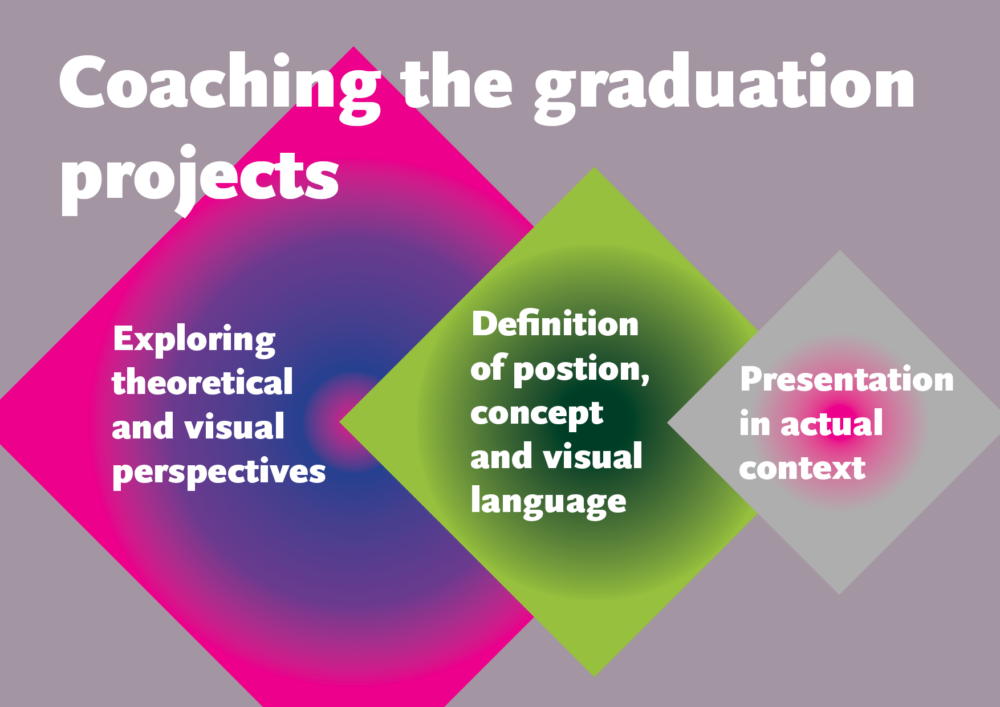New Design and Attitude, 4th year students (2022)
My role encompasses guiding students from the initial concept stage through project execution and final presentation. The goal of these graduation projects is to demonstrate that students are ready to enter the professional world by showcasing their ability to analyze the world critically, by defining their role as designers, and by the ability to effectively develop a visual language and strategies to communicate their ideas.
The graduation semester consists of eleven project lessons. My main idea for the programme of these 11 lessons was based on a linear process. Starting with understanding the theme, exploring its possibilities, and afterwards narrowing down the theme, defining the position the student takes within the theme, resulting with the definition of a problem statement, which leads to the design proposal.
This linear process, is interrupted by giving each lessons assignments that expand the understanding, and assignments that define the understanding in terms of concept and image.
In my opinion, the iterative process of exploration and definition leads to the most effective outcomes.
Bellow, I present an short overview how I structure the graduation lessons.
Lesson 1–4: widening the understanding of the theme, exploring own position as a designer, exploring visual language and strategies.
The first four lessons focus on widening the theoretical and visual perspectives, experimenting with strategies and visual concepts and exploring the possibilities. At the same time asking question, how do I position myself as a designer in the professional world.
In these lessons, I give a mix of individual and group assignments that aim is to open up ideas and possibilities. In various group assignments students use the power of team work to brainstorm and give each other reviews.
Lesson 1:
- Introduction of preliminary themes followed by a feedback session.
- Develop a design process for the graduation project.
- Scenario assignment: Close your eyes and envision your ultimate graduation project. Create a visual representation of its appearance and the emotions it evokes.
- Brainstorm potential stakeholders and experts relevant to the project.
- Formulate an initial design question.
Lesson 2:
- Point reflection (The goal of this brainstorm session is to explore various perspectives on the theme and design decisions).
- Assignment – ladder of abstraction. This technique allows students to shift their perspectives on the theme, ranging from broad (abstract: context) to specific (defined: strategy and visual language).
Lesson 3:
- Storytelling: Develop a narrative for the project. Create a prototype or model of the project to convey its essence. Explore user interaction with the design.
Lesson 4:
- Feedforward session.
- Definition of Why (the purpose), How (the process), What (the result)
Lesson 5–10: definition of design, definition of the project presentation within the actual context.
- These lessons are a mix of individual project discussions and peer discussions.
- I use a feedforward form that students complete prior to attending a lesson. This form is based on the “DasArts method.” Students describe the current situation, the triggering factors, the envisioned optimal scenario, and the questions they would like to discuss.
- During these conversation sessions, the emphasis lies in defining concepts, refining visual language, strategizing, engaging with external experts and stakeholders, project execution, and implementation of the projects in the actual context.
